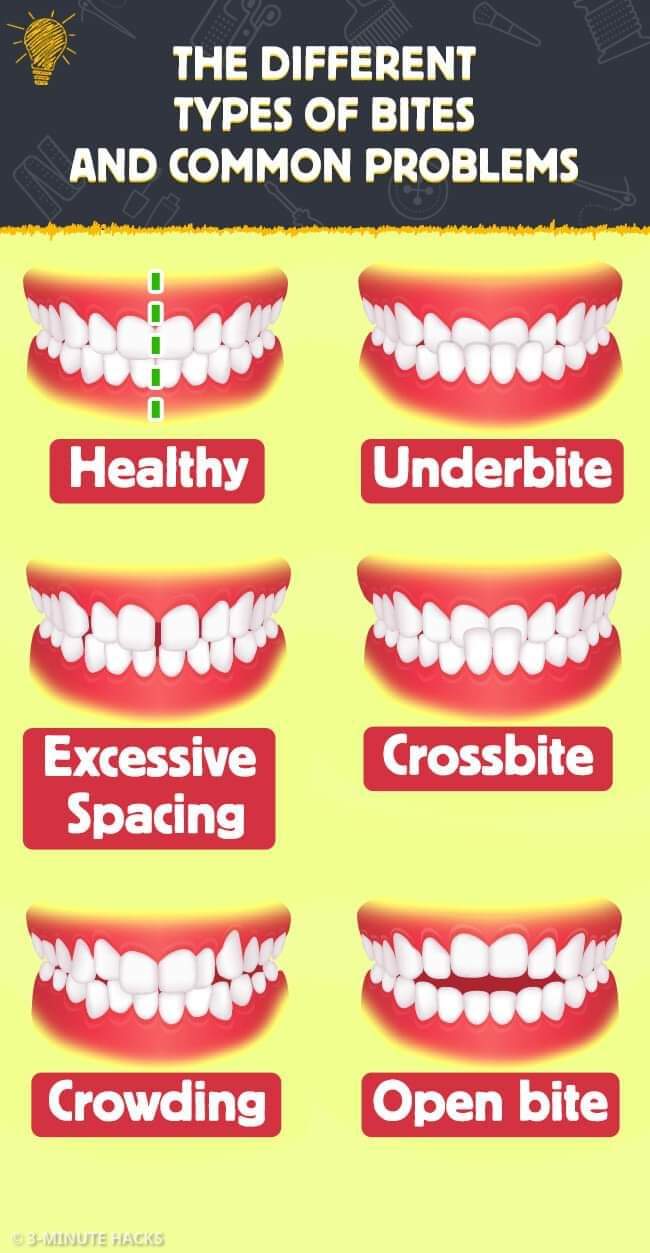
In this article, we will look at the different types of bites and their problems. We’ll also discuss how each can be fixed and what you should do if your child has a malocclusion.
Underbite
An underbite is a condition where the lower jaw is shorter than the upper jaw. This can be caused by genetics, teeth crowding or jaw misalignment. An underbite can cause problems with chewing and speech. In some cases, it may be necessary to remove some of your baby’s deciduous (baby) teeth before they come out naturally so that they don’t interfere with permanent teeth coming in straight later on. For example: if you have an underbite and your baby tooth falls out at age 6 instead of 5 years old like most people do then this will cause problems when attempting to get braces because there isn’t enough room for all four aligners at once due to lack space between them being too small due having such low levels of growth during childhood development stages which means having less room available for each bracket/wire attachment point used during treatment process as well as causing discomfort when trying wear these appliances overtop existing ones; therefore requiring removal first prior treatment start date.
Excessive Spacing
If you have excessive spacing between your teeth, this could be caused by a number of different things. It may be due to genetics or jaw misalignment, but it can also result from missing or extra teeth, gum recession and abnormal bites. If you have an abnormal bite (meaning that your upper and lower jaws don’t meet properly) then there will be more room between your top front teeth than usual because they aren’t closing together as they should during chewing. This means that food gets stuck in between them when you eat hard foods such as nuts or apples; hence why many people end up cutting them into small pieces before eating them! If this sounds familiar then there are treatments available which can help reduce the amount of space between your top front incisors:
Crossbite
Crossbite is when your lower teeth are in front of your upper teeth. This can cause problems with speech and chewing because the tongue has to work harder to keep food from getting stuck between them. Crossbite can be fixed with orthodontics, which is a series of appointments where you will get braces on your teeth so they’re straightened out.
Crowding
Crowding is when the upper and lower teeth are too close together. It can be caused by genetics, but it can also be caused by thumb sucking or pacifier use. The problem with crowding is that it can cause gum disease and cavities because of poor dental hygiene.
Open Bite
Open bite is the most common malocclusion (a misalignment of the teeth and jaws) in children. In this case, the upper jaw is longer than the lower jaw, so there’s not enough space for both sets of teeth to come together properly. The cause of an open bite can vary depending on your child’s age and other factors. For example:
- If you had a lot of cavities as a kid or adult and had them filled with amalgam fillings instead of natural tooth structure like porcelain veneers or crowns (which are more expensive), then they could be causing an underbite because they’re pushing down on your gums as they grow back in after being pulled out by braces (also known as retainer).
- If you had braces before puberty–when the bones are still soft enough for orthodontic appliances like brackets and wires to move them into place–and then stopped wearing them too soon before their job was done…this too could lead to an underbite because some areas around each tooth still need adjusting before being finished off completely with retainers afterwards.”
Bites are a complex issue, and it’s difficult to find the right solution for every patient. However, by understanding the different types of bites, you can better assess your own situation and seek out what might work best for you.
